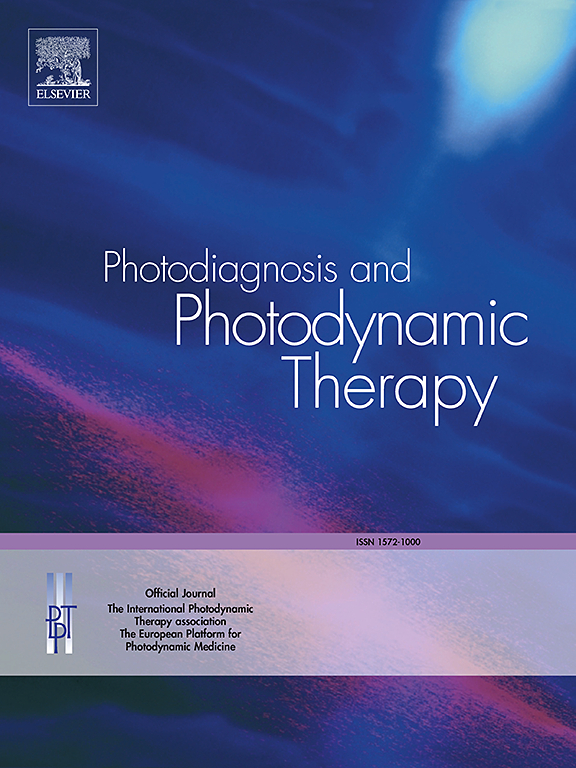Efficacy of repeated low-level red-light therapy combined with defocus incorporated multiple segments spectacles for controlling childhood myopia
IF 3.1
3区 医学
Q2 ONCOLOGY
引用次数: 0
Abstract
Objective
To evaluate the differences in the efficacy of repeated low-level red-light (RLRL) therapy combined with either single-vision spectacles (SVS) or defocus incorporated multiple segments (DIMS) spectacles in slowing myopia progression in children.
Methods
A total of 129 myopic children aged 6–14 years were recruited between July 2023 and February 2024. Participants had at least one eye with spherical equivalent refraction (SER) <-0.50D and astigmatism ≤ 3.00D after cycloplegia. They were divided into four groups: SVS, DIMS, RLRL combined with SVS (RCS), and RLRL combined with DIMS (RCD). The RCS and RCD groups wore spectacles and received daily RLRL therapy sessions. The primary outcome was the change in axial length (AL) at 12 months.
Results
After 12 months, the mean changes of AL were: 0.26 mm (95 % CI, 0.17 to 0.35 mm) for SVS, 0.16 mm (95 % CI, 0.11 to 0.21 mm) for DIMS, -0.21 mm (95 % CI, -0.45 to 0.02 mm) for RCS, and -0.14 mm (95 % CI, -0.27 to -0.01 mm) for RCD. Significant differences were observed between groups (F = 15.18, P < 0.001). Post-hoc tests showed that the RCS and RCD groups exhibited significantly greater shortening compared to the SVS and DIMS groups (all P < 0.001). However, no significant difference was observed between the RCS and RCD groups (P > 0.05). No severe adverse events or safety concerns related to RLRL therapy were observed throughout the study.
Conclusion
RLRL therapy is a potentially effective and practical approach for myopia control, demonstrating comparable efficacy when combined with either SVS or DIMS spectacles.
重复低水平红光治疗联合离焦合并多段眼镜控制儿童近视的疗效。
目的:评价重复低水平红光(RLRL)治疗联合单视力眼镜(SVS)和离焦合并多段眼镜(DIMS)在减缓儿童近视进展中的疗效差异。方法:于2023年7月至2024年2月招募6-14岁近视儿童129例。结果:12个月后,AL的平均变化为:SVS为0.26 mm (95% CI, 0.17至0.35 mm), DIMS为0.16 mm (95% CI, 0.11至0.21 mm), RCS为-0.21 mm (95% CI, -0.45至0.02 mm), RCD为-0.14 mm (95% CI, -0.27至-0.01 mm)。组间差异有统计学意义(F=15.18, P < 0.001)。事后检验显示,与SVS和DIMS组相比,RCS和RCD组明显缩短(均P < 0.001)。RCS组与RCD组间差异无统计学意义(P < 0.05)。在整个研究中未观察到与RLRL治疗相关的严重不良事件或安全问题。结论:RLRL治疗是一种潜在的有效和实用的近视控制方法,与SVS或DIMS眼镜联合使用时效果相当。
本文章由计算机程序翻译,如有差异,请以英文原文为准。
求助全文
约1分钟内获得全文
求助全文
来源期刊

Photodiagnosis and Photodynamic Therapy
ONCOLOGY-
CiteScore
5.80
自引率
24.20%
发文量
509
审稿时长
50 days
期刊介绍:
Photodiagnosis and Photodynamic Therapy is an international journal for the dissemination of scientific knowledge and clinical developments of Photodiagnosis and Photodynamic Therapy in all medical specialties. The journal publishes original articles, review articles, case presentations, "how-to-do-it" articles, Letters to the Editor, short communications and relevant images with short descriptions. All submitted material is subject to a strict peer-review process.
 求助内容:
求助内容: 应助结果提醒方式:
应助结果提醒方式:


